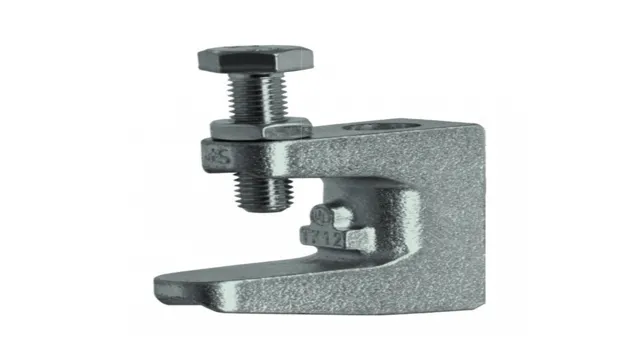How Many Clamps Do I Need for Woodworking Projects: A Comprehensive Guide

Clamps are incredibly versatile tools that can help with a wide range of DIY projects. Whether you’re constructing a piece of furniture, repairing a damaged item, or simply trying to hold something in place, clamps are an essential tool to have at hand. However, it can be difficult to know exactly how many clamps you need for a project.
While some people might think that one or two clamps are sufficient, others may believe that dozens are necessary. So, how many clamps do you really need? In this blog post, we’ll explore different scenarios that can help you determine how many clamps you should have in your toolkit.
Understanding Clamps
When it comes to clamps, the number you’ll need depends on the project at hand. For smaller jobs, one or two clamps may suffice, while larger projects require more clamps for optimal results. It’s always better to have more clamps than you think you’ll need, as it’s easier to remove extras than it is to run out mid-project and have to run to the store.
The type of clamp you need also depends on the job, with pipe clamps being ideal for woodworking and C-clamps better suited to metalworking. Don’t forget to consider the size of the materials you’re working with, as larger pieces may require multiple clamps to hold them securely. So, how many clamps you need is ultimately up to the specifics of your project, but it never hurts to have a few extra on hand just in case.
Types of Clamps
Clamps are an essential tool in every handyman’s toolkit. They are used to hold objects firmly in place during construction or repair work. Clamps come in various types and sizes, each designed with a specific purpose in mind.
Some of the most common types of clamps include spring clamps, bar clamps, pipe clamps, and C-clamps. Spring clamps are easy to use and provide a quick and temporary solution to hold materials together. Bar clamps, on the other hand, are used for larger and heavier pieces of wood, such as in furniture making.
Pipe clamps are designed for pipes and can hold them tight without damaging them, while C-clamps are handy for woodworking jobs to clamp two pieces together and to hold pieces while drilling. Understanding the different types of clamps available and their usage helps in making the right choice of clamps for your particular project.

Factors to Consider
When it comes to securing objects and materials, it’s important to choose the right kind of clamp. Clamps come in a variety of shapes and sizes, ranging from basic spring clamps to heavy-duty C-clamps, and each type serves a different function. Understanding the type of clamp needed is crucial in ensuring that the item being secured stays in place and that no injuries occur.
Some factors to consider when choosing a clamp include the weight and size of the item being secured, the level of pressure needed, and the type of material being used. It’s important to carefully consider these factors to choose the right type of clamp and ensure proper functioning. Additionally, it’s important to make sure that the clamp is properly installed and tightened to ensure maximum safety and efficiency.
At the end of the day, the right clamp can make all the difference in ensuring that projects are successful, materials are secured safely, and injuries are avoided.
Determining the Number of Clamps
Are you trying to figure out how many clamps you need for your project? The number of clamps you need depends on the size and weight of the materials you are working with. As a general rule of thumb, aim to have one clamp for every foot of material you need to secure. So if you have a two-foot piece of wood, you should aim for at least two clamps.
However, don’t forget to also consider the width and thickness of the material as well as any angles or corners that may need extra support. It’s always better to have too many clamps than not enough, as they provide stability and ensure the material stays in place while you work. So when in doubt, grab an extra clamp or two to be safe.
Calculating Clamps Needed
Calculating Clamps Needed One critical aspect of any DIY project is determining the number of clamps needed. The right number of clamps will ensure that the project is held in place securely, so it is important to calculate the correct number of clamps to use. Typically, the number of clamps needed will depend on the size and weight of the workpiece being held.
For heavy workpieces, more clamps may be necessary to hold the piece steadfastly. Additionally, you should consider the size of the clamps as well. Smaller clamps might be able to adequately hold smaller pieces, while larger work will require larger clamps.
Finally, it is important to purchase quality clamps since they will be doing the heaviest lifting in your project. Investing in sturdy, durable clamps will help ensure your project’s success.
Safety Tips When Using Clamps
When using clamps for woodworking or other projects, it’s important to make sure you have the right number of clamps for the job. If you don’t use enough clamps, the pressure won’t be evenly distributed and your project could warp or become misaligned. On the other hand, using too many clamps can result in damage to the workpiece or even injury to yourself.
The number of clamps you need will depend on the size and shape of your workpiece, as well as the type and strength of the clamps you’re using. As a general rule, you should aim to use at least one clamp per foot of the workpiece, but more may be needed if the piece is particularly large or heavy. Always follow the manufacturer’s instructions for the clamps you’re using, and consider seeking the advice of a professional or experienced woodworker if you’re unsure about how many clamps to use for your project.
Final Thoughts
So, you’re wondering how many clamps you need for your woodworking project? The answer is, it depends. The number of clamps you need will vary depending on the size and complexity of your project. However, a general rule of thumb is to have one clamp for every foot of material you’re working with.
For example, if you’re working with a 6-foot piece of wood, you’ll need at least 6 clamps. It’s always better to have more clamps than you think you’ll need, so you have the flexibility to adjust and reposition your work as you go. Keep in mind that different types of clamps serve different purposes, so it’s a good idea to have a variety on hand.
Whether you’re using C-clamps, bar clamps, pipe clamps, or spring clamps, having the right tools for the job will ensure your project is a success.
Conclusion
In the eternal quest to determine how many clamps one needs, there is no one-size-fits-all answer. It all depends on the project, the materials, and your personal preferences. Some say you can never have too many clamps, while others believe in a minimalist approach.
The important thing is to have enough clamps to ensure a secure and steady grip, and to never underestimate the power of a well-placed clamp. Remember, a clamp is like a best friend – always there when you need it, and ready to lend a helping hand (or grip) when things get a bit shaky.”
FAQs
What size clamps should I use for my project?
The size of the clamp you need will depend on the size of the material you are working with. As a general rule, the clamp should be at least as long as the width of the material you are clamping.
How many clamps do I need for my project?
The number of clamps you need will depend on the size and complexity of your project. As a general rule, you should have one clamp for every 12 inches of material that you need to hold in place.
Can I use quick release clamps for my project?
Quick release clamps can be a convenient option for some projects, but they may not provide as much holding power as traditional screw clamps. It’s important to consider the weight and size of your materials before deciding on the type of clamp to use.
What material should my clamps be made of?
Clamps can be made from a variety of materials, including steel, aluminum, and plastic. The material you choose will depend on factors such as the weight of the materials you are working with and the level of durability you need for your project.
How much pressure should I apply with my clamps?
The amount of pressure you apply with your clamps will depend on the type of material you are working with. As a general rule, you should apply enough pressure to hold the material securely in place, but not so much that it is damaged.
Can I reuse my clamps for future projects?
Clamps can be reused for multiple projects, as long as they are still in good condition and can hold the materials securely. It’s important to inspect your clamps regularly to ensure they are in good working order.
Do I need to clean my clamps after using them?
It’s a good idea to clean your clamps after each use, especially if you have been working with materials that may leave residue or debris. Use a soft cloth or brush to remove any dirt or debris, and wipe them down with a mild cleaning solution if needed.



